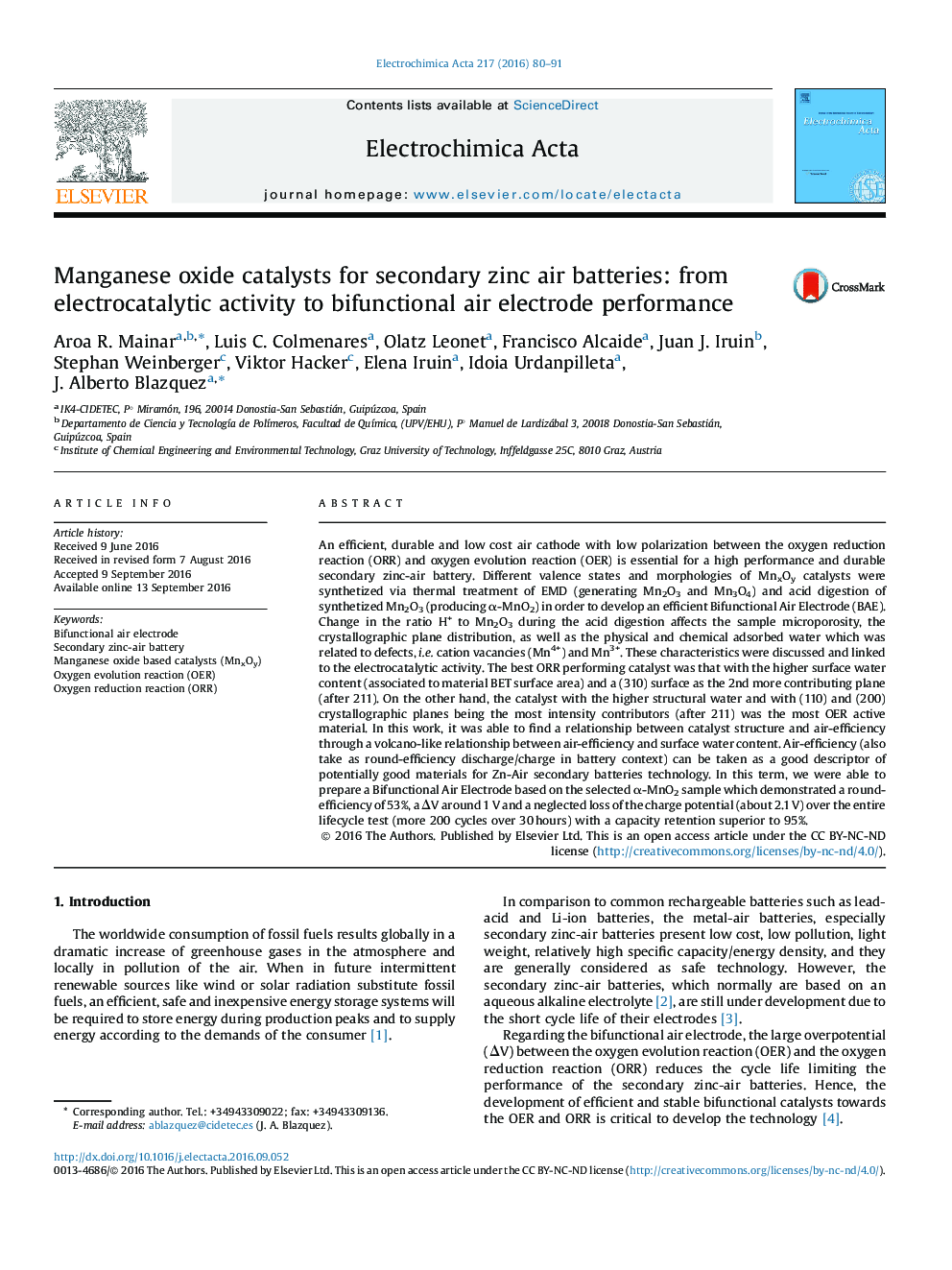| کد مقاله | کد نشریه | سال انتشار | مقاله انگلیسی | نسخه تمام متن |
|---|---|---|---|---|
| 6472790 | 1424140 | 2016 | 12 صفحه PDF | دانلود رایگان |
- The novelty of this work originates from the combination of synthesizing manganese oxide based catalysts with different morphologies, physicochemical properties and electrocatalytic characteristics towards ORR and OER and the characterization thereof.
- The most promising MnxOy catalysts were selected and incorporated in bifunctional air electrodes as Gas Diffusion Electrode (GDE).
- The most promising α-MnO2 catalyst has been tested in a rechargeable Zn-Air battery cell showing more than 200 charge/discharge cycles, capacity retention above 95%, round-efficiency about 53% and ÎV ORR-OER ca. 1.0 V.
An efficient, durable and low cost air cathode with low polarization between the oxygen reduction reaction (ORR) and oxygen evolution reaction (OER) is essential for a high performance and durable secondary zinc-air battery. Different valence states and morphologies of MnxOy catalysts were synthetized via thermal treatment of EMD (generating Mn2O3 and Mn3O4) and acid digestion of synthetized Mn2O3 (producing α-MnO2) in order to develop an efficient Bifunctional Air Electrode (BAE). Change in the ratio H+ to Mn2O3 during the acid digestion affects the sample microporosity, the crystallographic plane distribution, as well as the physical and chemical adsorbed water which was related to defects, i.e. cation vacancies (Mn4+) and Mn3+. These characteristics were discussed and linked to the electrocatalytic activity. The best ORR performing catalyst was that with the higher surface water content (associated to material BET surface area) and a (310) surface as the 2nd more contributing plane (after 211). On the other hand, the catalyst with the higher structural water and with (110) and (200) crystallographic planes being the most intensity contributors (after 211) was the most OER active material. In this work, it was able to find a relationship between catalyst structure and air-efficiency through a volcano-like relationship between air-efficiency and surface water content. Air-efficiency (also take as round-efficiency discharge/charge in battery context) can be taken as a good descriptor of potentially good materials for Zn-Air secondary batteries technology. In this term, we were able to prepare a Bifunctional Air Electrode based on the selected α-MnO2 sample which demonstrated a round-efficiency of 53%, a ÎV around 1 V and a neglected loss of the charge potential (about 2.1 V) over the entire lifecycle test (more 200 cycles over 30 hours) with a capacity retention superior to 95%.
163
Journal: Electrochimica Acta - Volume 217, 1 November 2016, Pages 80-91
